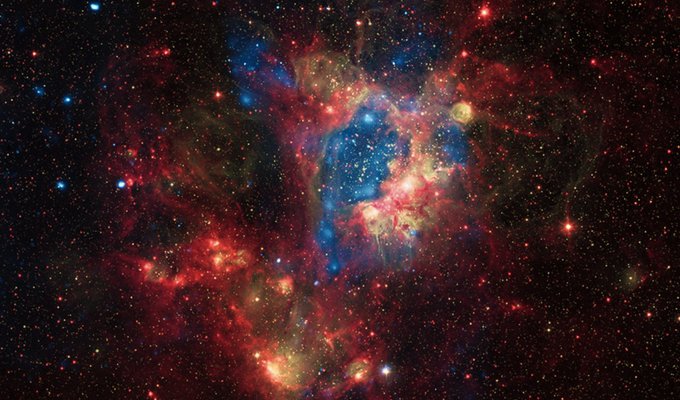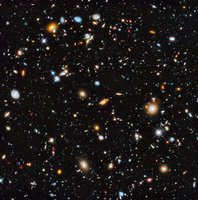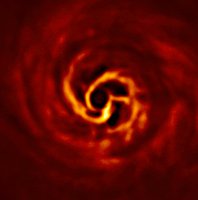You probably use light you can't see everyday. Like your remote control, did you know it uses infra-red light to communicate with your TV? Try this UNAWE experiment at home and you can see for yourself!

Looking up at the night sky, you might think that space is a pretty colourless place, with lots of black, some white dots and just a hint of red if you're lucky. But if we look deeper we come across a whole rainbow of colours. In fact, space has a lot more colours than our eyes can see!
You've probably heard the phrase 'visible light'. This is what we call the range of colours that humans can see with their eyes. Visible light is just a tiny portion of all light. So astronomers have built special telescopes to see things that human eyes can't! For this picture, three telescopes were used and each picked up a different type of light.
If you've been keeping up to date with Space Scoop, you might recognise the object in this picture from the 'Blowing Bubbles around our Galaxy' story. This is a 'Super-bubble', a cloud of gas and dust blown into a ring shape by the active stars at its centre.
Can you see the hot, young stars in the centre of this Super-bubble? These were captured with one of the three telescopes in X-ray light, which has been coloured blue. X-rays have a lot of energy, so when we look at the universe in X-ray light, we see some the hottest stars and most powerful explosions.
Infra-red light is given off by much cooler objects than stars. For example, humans give off infra-red light of our own! In this picture, infra-red shows us the colder gas and dust of the Super-bubble, coloured in red. This part of the picture was taken with the second telescope. The rest of the picture is yellow, this shows us visible light. These are the parts of the image that we could see with our own eyes, if we were close enough!



















